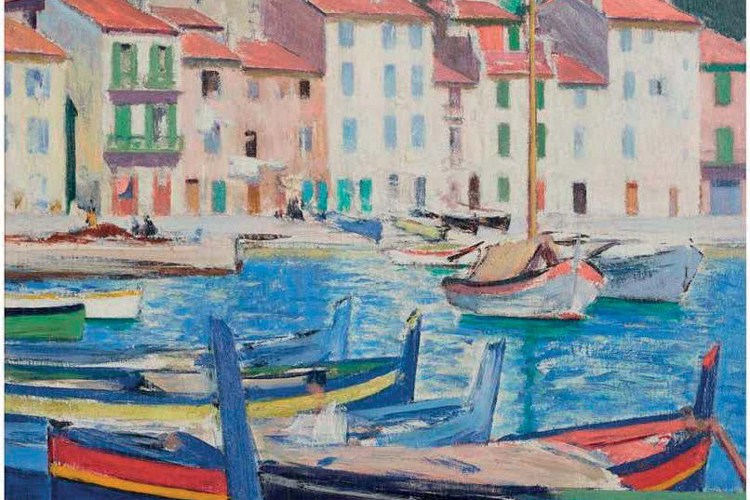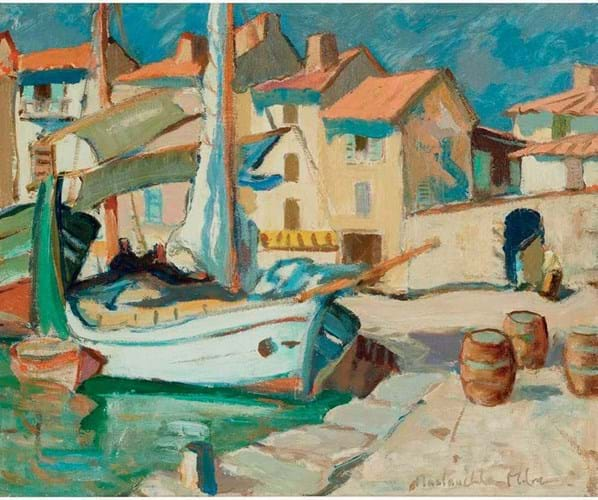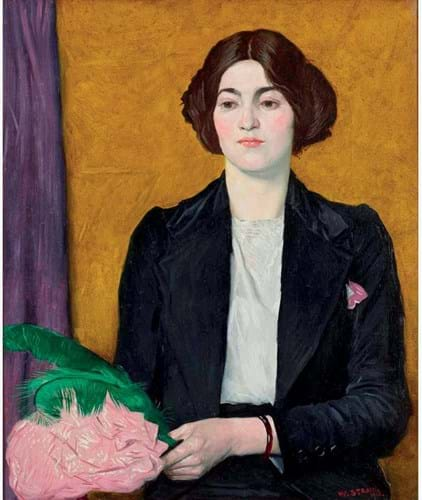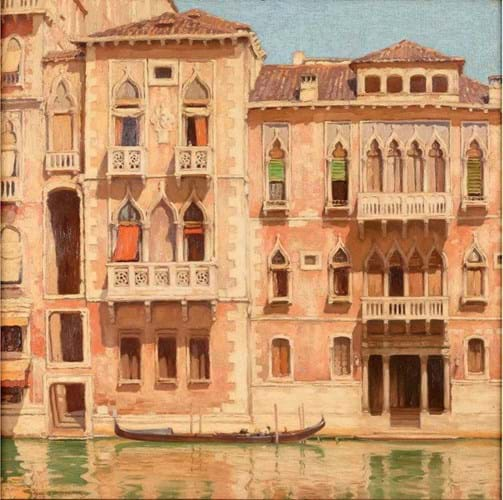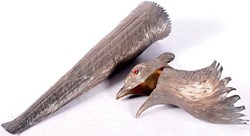“I find this part of France most interesting to paint. The light is wonderfully brilliant even fierce – the weather is superb – Basking… This place has several points in common with Iona.”
So wrote Scottish Colourist Francis Campbell Boileau Cadell (1883-1937) in 1923, explaining the attractions of the southern French port of Cassis to his patron George Chiene.
He mentioned how he was drawn to the formation of headlands and the sun-kissed sea but, unlike the island of Iona in the Inner Hebrides where he had worked prolifically, he never felt he was “painting against time and trying to get finished before the next squall of rain”.
While he produced hundreds of pictures of Iona from 1912 onwards, views of Cassis are significantly rarer. They are available at auction much less often.
Market freshness
It was, therefore, a notable moment in Cadell’s market when one that had been unseen for over 80 years emerged as the star lot at Lyon & Turnbull’s (26/25% buyer’s premium) latest Scottish Paintings & Sculpture sale in Edinburgh.
Dating from the early 1920s, the vibrantly coloured painting shows the waterfront with a line of boats and limestone hills to the background.
Cadell first travelled to Cassis in 1923 and returned in 1924 (accompanied by fellow Colourist Samuel Peploe). The works he produced during these short spells found favour commercially – for example, he sold 10 pictures in 1923 for prices from £30 to £50 each to key patrons such as Edinburgh collectors JJ Cowan and Jane Rough.
In 1924, he sold another oil painting at the Royal Glasgow Institute for £76 while at least four further Cassis pictures sold between 1925-6.
Today, examples can be found in The Fleming Collection and Kirkcaldy Galleries in Fife, while a number of further works featured significantly at the Cadell retrospective at the National Galleries of Scotland in 2011.
Examples are scarce but not unheard of on the market. The highest auction price for a Cassis painting by Cadell was the £220,000 for one of his depictions of The White Villa that sold at Christie’s in 2014. Interestingly, a watercolour study of a similar view to the current work sold at Sotheby’s sale of the Harrison collection in 2021 for £45,000 – a strong sum for a small-scale work on paper.
The work at L&T was also pretty small. The 17¼ x 14in (44cm x 36cm) oil on panel was simply titled Cassis, le Port.
While the estimate of £150,000- 200,000 at the December 7 sale may have looked fairly punchy for a picture on this scale, bidders clearly viewed it as a significant opportunity and reacted favourably, not least thanks to its market freshness, having been acquired by a private collector in Glasgow between the wars and unavailable since.
It was eventually knocked down at £230,000, marginally exceeding the above-mentioned price at Christie’s despite being a little over half the size. The auction house would not reveal any information about the buyers of specific lots, but reported “strong bidding from across the UK and overseas” at the sale generally.
However, leaving aside the top Cadell, the performance of works by the Scottish Colourists overall was fairly mixed. Another modestly sized picture by Cadell – an earlier view of sailboats on the Grand Canal, Venice – sold below estimate at £58,000, while another big ticket lot going under predictions was a ‘prime period’ still-life by Samuel John Peploe (1871-1935) that sold for £180,000. Another still-life by Peploe was unsold against a £80,000-120,000 pitch.
Five Milne works
The pick of five lots by John Maclauchlan Milne (1885-1957), an artist often dubbed the ‘Fifth Colourist’ (alongside Cadell, Peploe, Geroge Leslie Hunter and John Duncan Fergusson), was another painting of a French coastal port.
Wine Boats, St Tropez was a fine example of the artist’s work in the French riviera where he was a regular visitor from 1919-32, returning to his base in Dundee to exhibit and sell his creations. The 20in x 2ft (51 x 61cm) signed oil on canvas here was described in the catalogue as a “tour de force” and a “brightly coloured, vividly rendered depiction of a quay-side scene”.
Crucially again, it came fresh to the market, having been acquired directly from the artist by Jack Lipsey of Glasgow in 1956 and coming by descent to the vendor. Guided at £40,000-60,000, it took £75,000.
The price was the second highest at auction for the artist, behind only another view of southern France, St Paul de Vence from 1926, that made £85,000 at Sotheby’s in 2021.
Strang and Oppenheimer
Two further early 20th century works bringing demand at the L&T sale were a Venetian scene by Charles Oppenheimer (1876-1961) and a portrait by William Strang (1859-1921).
The latter was a 2ft 6in x 2ft 1in (76 x 64cm) oil on canvas from 1912 titled Girl with Fan which was thought to depict his daughter Nancy. The following year, she posed for his famous work The Opera Cloak which he exhibited at the Royal Portrait Society.
The current work had previously sold for £16,000 at McTear’s in 2014, a record for the artist at the time but one which was eclipsed by another portrait of Nancy reading that took £26,000 at Christie’s in 2016.
Strang was both a pre-eminent etcher and portraitist whose work covered a wide range of styles from Realist and Symbolist works to more traditional subjects. The current picture seemed to interlace his disparate threads and was decoratively appealing with the use of gold, purple, pink and green colours giving it both a sophisticated and enigmatic atmosphere.
Estimated at £15,000-20,000, it was highly contested on the day with the gavel eventually falling at £43,000, a new benchmark for Strang and a significant return on the 2014 price.
Meanwhile, Oppenheimer’s view of the Grand Canal overshot a £8000- 12,000 pitch and sold at £26,000, the third-highest auction price for the half-German, Manchester-born painter (he is often designated a Scottish artist as he moved to the country after the First World War and was a prominent part of the Kirkcudbright School of artists).
His views of Italy emerge less frequently than his Scottish subjects and this example was relatively large at 2ft 6in (76cm) square. Such Venetian scenes were an important part of Oppenheimer’s oeuvre – his father had studied mosaic design and manufacture in Venice in the 1860s and he himself won a funded prize at the age of 21 to travel to Florence and Venice.
Here the skilful depiction of the façade of the Palazzo Contarini Fasan, a 15th-century gothic structure, as well as the subtle tones and play of light and shadow on the water were well regarded. The subject was also a highly attractive one – Ruskin referred to the building as “the most elaborate piece of architecture in Venice”.
Overall, the total at L&T was £1.95m including premium from 170 lots.


